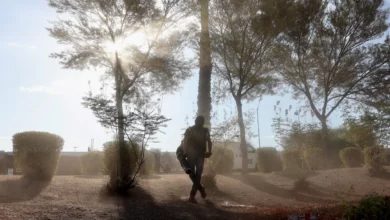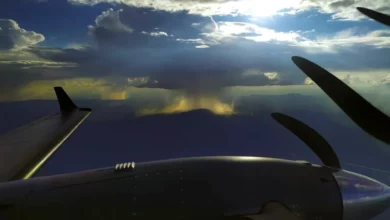
Ministers in Paris have until Friday to conclude a 195-nation pact to stop Earth's climate becoming inhospitable to humans and other species.
If humankind continues to emit greenhouse gases unabated, the average global temperature by 2100 will be about 5.2 degrees Celsius (9.4 degrees Fahrenheit) higher than pre-Industrial Revolution levels.
The goal is not to exceed 2C (3.6F). Ever.
But even if countries fully honour the carbon-curbing pledges they submitted to bolster the hoped-for Paris pact, average warming will be 3C (5.4F) by century's end, scientists say.
The year 2015 is set to hit the 1C (1.8F) mark — halfway to the targeted ceiling.
What is at stake?
– Heatwaves –
Some 1.5 billion people will be exposed to heatwaves every year by 2100 under 2C, according to Avoid 2, a British government-funded consortium of climate change research institutes.
The number will rise to about 4.5 billion under 3C, and 12 billion under 5.2C.
A rare heatwave of the severity that killed 70,000 people in Europe in 2003, would happen once every four years in a 2C-warmer world, and biennially under 3C, according to French climatologist Jean Jouzel. At 4-5C, every single European summer will be hotter than 2003.
– Flooding –
An estimated 30 million people would be affected by flooding every year by 2100 under 2C, says Avoid 2. This would rise to about 60 million under 3C, and double that number at 5.2C.
– Rising seas –
According to Jouzel, sea levels would be about 40 cm (17 inches) higher by 2100 in a 2C-warmer world by 2100, some 60 cm at 3C and at 4-5C, closer to 80 cm. "And it won't stop there."
Driving the rise are ice sheets in Greenland and Antarctica shedding mass faster than ever, melting glaciers, and oceans that expand as they warm.
Even a 2C rise as targeted by the UN would submerge land currently occupied by 280 million people, according to Climate Central, a US-based research group. The change could take a few hundred years, or up to 2,000 years.
– Water dilemma –
Global warming can lead to long-running droughts and devastating floods, which means some parts of the world will not have enough water and others too much.
In a 2C world, an estimated 1.5 billion people would be exposed to some level of "water stress" in 2100, rising to about 2 billion at 5.2C.
– Humanitarian crises –
Heatwaves, droughts and heavy rains can spur disease, ravage crops, and destroy homes and livelihoods, pushing millions more people into poverty. Conflict over water or other dwindling resources could fuel mass migration or war.
People living on low-lying islands such as the Maldives, an archipelago in the Indian Ocean, or the Philippines could become climate refugees, forced to flee their homes due to rising seas.
Poor people are hurt most by climate extremes, relying directly on the land and often lacking public services.
– Treasures of nature, civilisation –
From the glimmering coral of the Great Barrier Reef to Mount Fuji and the canal-crossed city of Venice, global warming may spell the ruin of some of the most precious jewels of nature and civilisation, UNESCO warns.
A warming climate is one of the principal menaces to the Great Barrier Reef, a dazzling, 2,300-kilometre (1,400-mile) coral reef system off the coast of northeastern Australia, threatened by rising seas, warming waters, storms, and greater ocean acidity.
Climate change threatens a range of other treasures as well, says UNESCO. In Japan, Mount Fuji's permafrost is already receding up the mountain's slopes. Venice could sink another 54 centimetres by 2100, UNESCO warns. And scientists say the ice field of Tanzania's dormant volcanic Mount Kilimanjaro could melt away entirely within 15 years.




